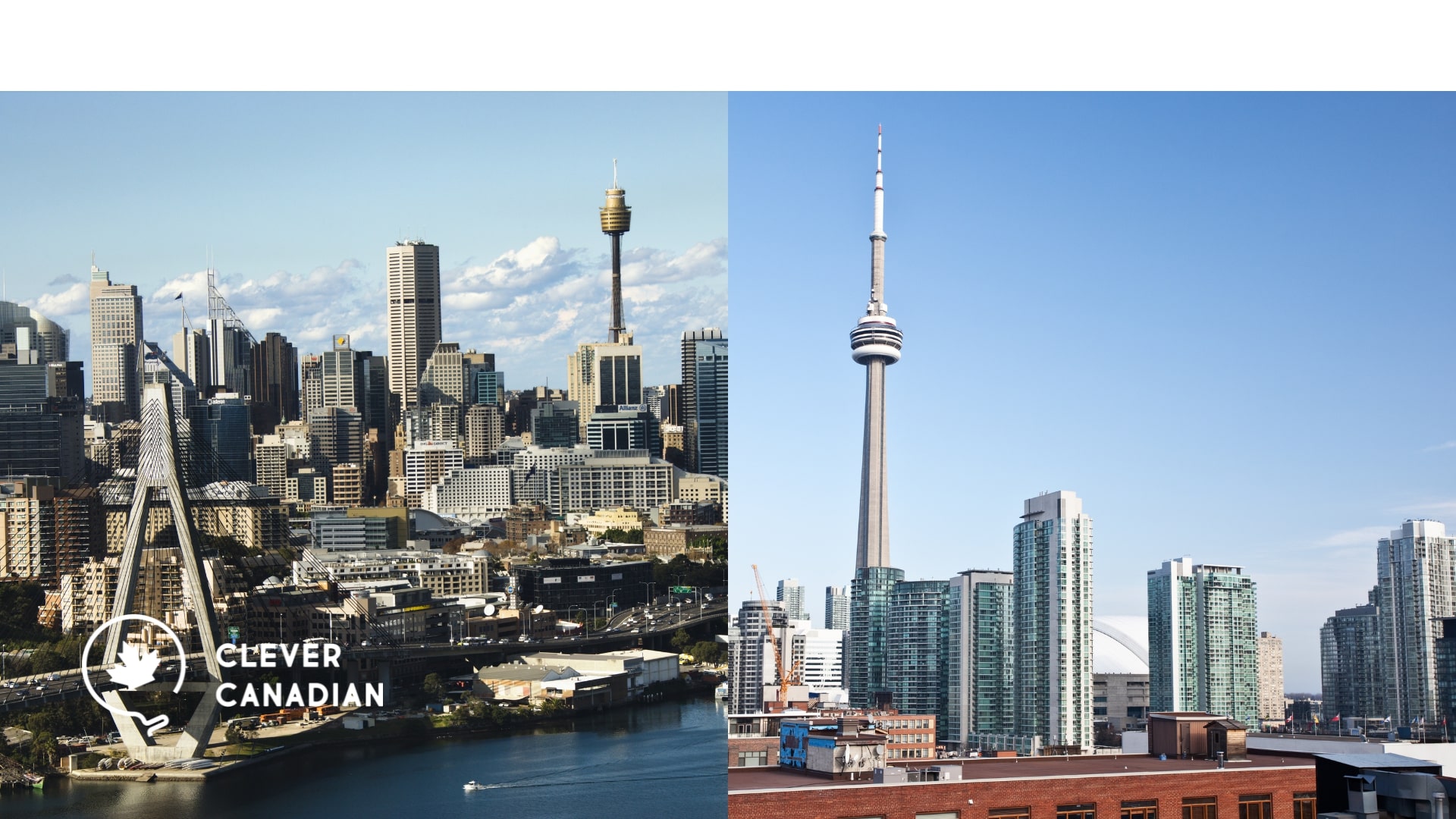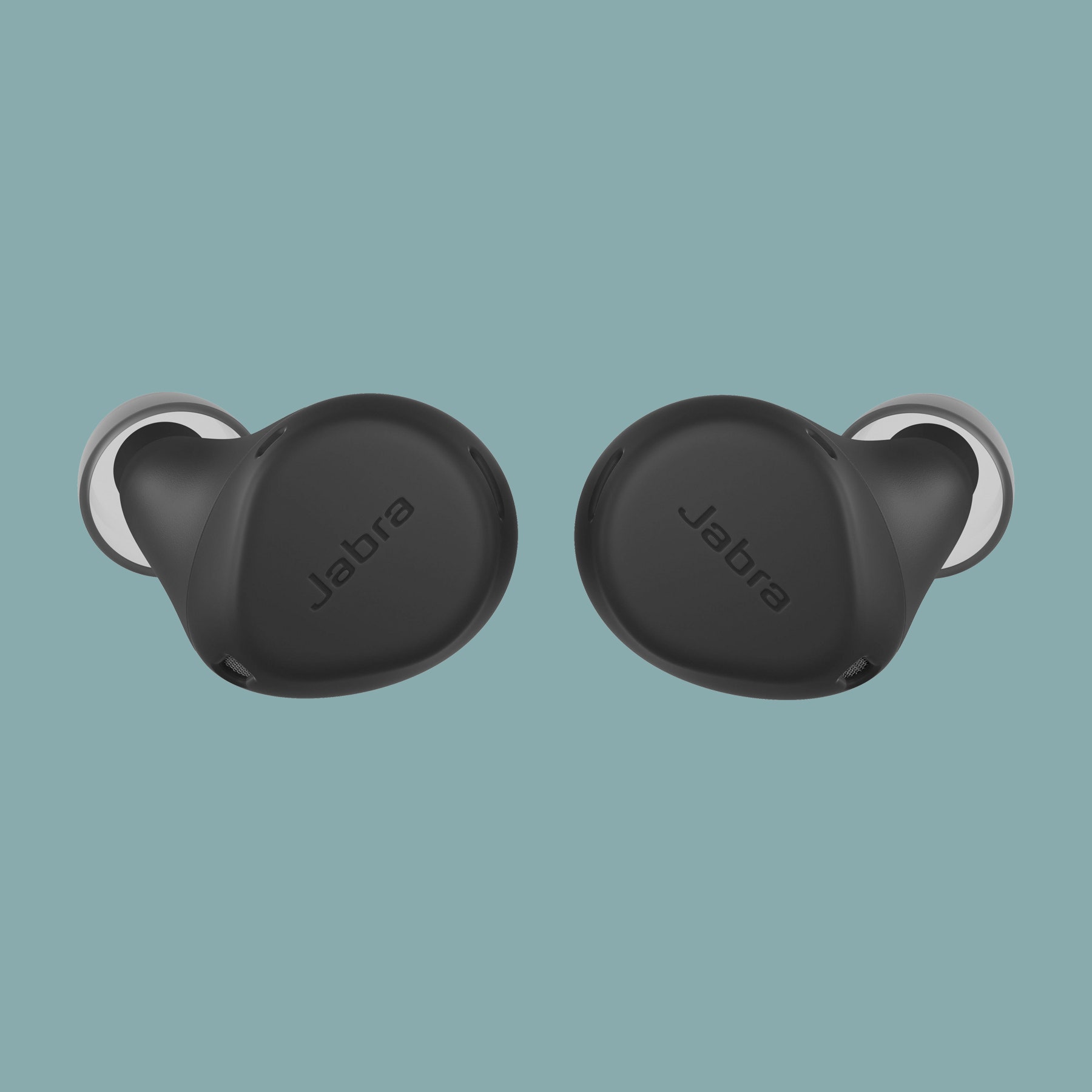Categories > Guides and Tips

Canada or Australia: Where should you immigrate?
- Permanent Residence (PR) Process: Canada vs. Australia
- Education: Canada vs. Australia
- Job Opportunities: Canada vs. Australia
- Taxation: Canada vs. Australia
- Healthcare: Canada vs. Australia
- Weather: Canada vs. Australia
- Population Diversity: Canada vs. Australia
- Mode of Transportation: Canada vs. Australia
- Crime Rate: Canada vs. Australia
- Lifestyle for Immigrants: Canada vs. Australia
- Final Thoughts
Are you having trouble deciding which to immigrate to Canada or Australia? There’s no absolute answer to which country has greener pastures for us since each person has different needs, goals, and other critical factors.
Canada is preferable for young students and workers looking for broader opportunities and efficient PR status waiting time. Meanwhile, Australia is a go-to for people with work experience and skills who prefer shorter working hours.
But how did we come up with this conclusion? Our research compared different factors, including job opportunities, cost of education, cost of living, lifestyle, etc. So, read on!
Permanent Residence (PR) Process: Canada vs. Australia

| Canada is preferable for those looking for swift immigration. Its application for residency takes five to eight months on average. Meanwhile, Australia is the better choice for those with diverse skill sets and who prefer flexibility in their profession. The PR application for Australia takes slightly longer, taking about eight to nine months. |
Although Canada has a faster PR processing rate, the competition for its residency exam (Canada Express Entry System), with a passing score of 67, sends nearly 110,000 invitations annually.
In fact, Canada gave out invitations to apply (ITA) for PR status to 98,038 immigrants in 2022.
On the other hand, Australia only hands out PR invitations to around 48,000 people annually, amounting only to 43.64% of Canada’s yearly invitations.
Australia’s PR exam is the Point System, with a passing score of 65 points.
However, passing the exam is only one of the many criteria for getting a PR visa in the two countries. We’ve listed these factors below.
| Criteria | Canada | Australia |
| Age of Applicant | Must be 18 years old | Must be 45 years old |
| PR Exam Passing Score | 67 points | 65 points |
| Education | An educational degree | A globally-recognized education degree |
| Work Experience | A 12-month work experience | Decent exposure in ROL (Regional Occupation List), MLTSSL (Medium and Long-term Strategic Skills List), or STSOL (Short-term Skilled Occupation List) |
| English Language Proficiency | Has a 6.0 passing score for IELTS (International English Language Testing System) | Has a 6.0 passing score for IELTS |
| Proof of Funds | Requires a funds paperwork as a proof of self-sufficiency | Requires paperwork from banks, evidence of grants or scholarships |
| Status | Requires a relative or family member living in Canada | Must be fit physically and mentally |
Overall, Canada is a preferable choice for young immigrants. However, getting a PR without a sponsorship from a relative or family member (e.g., spouse, common-law partner, child or grandchild) would be a bit difficult.
Meanwhile, Australia is a safe bet for middle-aged migrants and those whose work experience falls under its ROL, MTSSL, and STSOL. Butcher, cabler, and registered nurse, are some of the many occupations under the said category that it updates yearly.
Education: Canada vs. Australia

| In Canada, although they may vary across provinces and institutions, tuition fees are generally more affordable than in most Western countries. Studying for an undergrad can cost 10,000-30,000 CAD/year (7,350-22,000 USD/year). Meanwhile, getting a bachelor’s degree in Australia can be a bit more expensive. An immigrant can expect to spend 20,000-45,000 AUD/year (12,930-29,108 USD/year) to get a diploma for an undergraduate course. |
Aside from undergraduate courses, both Canada and Australia offer different education levels for foreigners. Below is a breakdown of the annual cost of studying in other education levels in the two countries.
| Education Level | Cost in Canada per year | Cost in Australia per year |
| Diploma/Certificate/Vocational Training | 10,000-15,000 CAD/year or 7,354.55 -11,031.82 USD/year | 4,000-22,000 AUD/year or 2,586.98-14,228.39 USD/year |
| Graduate Degree | 15,000-65,000 CAD/year or 11,031.82 – 47,804.57 USD/year | 22,000-50,000 AUD/year or 14,228.39-32,337.25 USD/year |
| Post-Graduate Degree | 7,000-17,000 CAD/year or 5,148.18-12,502.73 USD/year | 22,000-42,000 AUD/year or 14,228.39-27,163.29 USD/year |
Canada and Australia have varying education costs depending on the education level, which would play a huge role when choosing between the two. Nevertheless, both countries have programs that give students a chance to have PR status.
Canada has two major PR programs for immigrant students who passed its Express System. These are the Canadian Experience Class (CEC) and Provincial Nominee Programs (PNPs).
Both Express Entry programs are for skilled workers. The CEC program is for those with work experience in the country, while the PNP is for immigrants hoping to stay in a specific province.
On the other hand, Australia provides PR visas to immigrants through Post-Study Work Visas (PSWV). Under certain conditions, bachelor graduates can get two to three years of student visa, while postgraduate students can benefit for up to four years.
Regardless, immigrants can enjoy exemplary learning in both Canada and Australia. Both countries made it to the 2023 World Population Review’s global education rankings, the former ranking fourth and the latter ranking eighth.
Job Opportunities: Canada vs. Australia

| Canada offers job opportunities in e-commerce and tech-related industries, whereas Australia needs a dynamic and skilled workforce. Although both countries give equal job opportunities for immigrants, they vary in industry focus. |
To further explain their current job markets as of 2023, we listed the top 10 in-demand jobs in Canada and Australia.
| Top 10 In-Demand Jobs | |
| Canada | Australia |
| Developer | Registered Nurses |
| HR Manager | Secondary School Teachers |
| Mechanical Engineer | Software and Applications Programmers |
| Welder | Electricians |
| Accounting Technician/Bookkeeper | Construction Managers |
| Registered Nurse | Carpenters and Joiners |
| Warehouse Worker | Metal Fitters and Machinists |
| Customer Service Representative | Plumbers |
| Driver | Motor Mechanics |
| Sales Associate | University Lecturers and Tutors |
In a nutshell, Canada needs immigrants with a grasp on tech, e-commerce, and supply chains. Meanwhile, Australia needs skilled workers.
Both Canada and Australia provide several pathways for immigrants to get PR. Choosing between the two and which province or region you will go to depends on the person’s skills and goals.
We’ve made a list of the programs in the two countries that immigrant workers can apply for to get grant PR status.
| PR Programs for Skilled Workers | |
| Canada | Australia |
| Federal Skilled Worker Program (FSWP) | General Skilled Migration Program that grants three types of visas: (1) Skilled Independent Visa (subclass 189), (2) Skilled Nominated Visa (subclass 190), and (3) Skilled Regional Visa (subclass 491) |
| Federal Skilled Trades Program (FSTP) | |
| Canadian Experience Class (CEC) | |
| PR Programs through Sponsorship/Recommendation | |
| Canada | Australia |
| Provincial Nominee Program (PNP) | Employer Nomination Scheme (ENS)Regional Sponsored MIgration Scheme (RSMS) |
| Family Sponsorship Program | |
| Caretaker Program (for caregivers) | |
| Atlantic Immigration Pilot | |
Meanwhile, Australia has fewer working hours per week than Canada, which is vital in creating a proper work-life balance. A full-time worker in the former labours for 31 hours per week, while it’s 40 hours in the latter.
Lastly, Australia has a higher average weekly salary than Canada, with the former at 1,789 AUD per week and the latter at 1,132 CAD per week—a 519 CAD difference. Still, it’s important to note that pay grades vary in different industries.
Taxation: Canada vs. Australia

| Canada’s tax rate is 4.4% higher than Australia. Canadians have to pay 28% tax rate, while Australians pay 23.6% |
On the flip side, living in Australia is more expensive than in Canada. The former is the 13th most expensive country to live in with a cost of living index (COLI) of 75.3, while the latter got the 25th spot, with a COLI of 66.1 based on Numbeo’s rankings.
COLI is calculated based on several economic factors. To provide a clear comparison, we’ve listed these aspects below.
| COLI Factors | Canada | Australia |
| Housing | $1,226.98 | $1,527.80 |
| Healthcare | Free primary healthcare and Medicare | Medicare |
| Minimum Wage per Hour | $11.66 | $14.88 |
| Childcare (private school for one child per month) | $809.11 | $1,443.46 |
Healthcare: Canada vs. Australia

| Australia has a better healthcare system than Canada, according to CEOWORLD’s Healthcare Index. The former ranked 3rd with a score of 74.11, followed by the latter at71.32—only a 2.79 score difference. |
Although both countries are known for their excellent healthcare, Australians live longer than Canadians. According to the World Population Review of 2023, Australia has an average life expectancy of 83.73 for both sexes, while Canada has 83.02.
Meanwhile, Canada and Australia provide healthcare to their public through Medicare, including immigrants with PR. However, it is worth noting that the former is known for having long wait times, with its peak in 2022 reaching 27.4 weeks.
It’s also worth noting that Australia encourages its high-earning citizens to apply for private insurance to avoid waiting times and improve its public facilities. It also employs bulk billing that charges a patient’s Medicare directly.
Weather: Canada vs. Australia

| Canada and Australia experience vastly different weather patterns due to their geographical locations. The former has a temperate subarctic climate, while the latter has a diverse climate similar to Mediterranean or arid regions. |
Canada is known for its cold winters, with average temperatures ranging from -15°C to -5°C (5°F to 23°F). Meanwhile, in summer, the temperature averages 21°C to 30°C (68°F to 86°F).
In contrast, Australian cities have different weather experiences. For instance, Sydney and Melbourne enjoy mild winters with average temperatures around 6.5°C to 14°C (43.7 to 57.6°F) and hot summers with averages of 14°C to 25.3°C (57.2°F to 77.5°F).
Meanwhile, Australia’s northern city of Darwin experiences a tropical climate with hot, humid conditions year-round and average temperatures around 24.7°C – 32°C (76.5°F – 89.6°F).
Population Diversity: Canada vs. Australia

| Canada has a more diverse immigrant population than Australia. The former has 29.1% of its population born overseas (7.5 million), while the latter has 23.0% (8.3 million), an 800,000 people difference. |
The main reason why Canada has more overseas residents than Australia is because of its immigration program that aims to address labour shortage. By 2025, it aims to welcome 500,000 immigrants.
Still, Canada and Australia have a vibrant multicultural population. Below is the list of top places of birth for immigrants in the two countries based on the 2021 data of Statistics Canada and Australia’s Department of Home Affairs.
| Canada | Population (2021) | Australia | Population (2021) |
| India | 8,361,505 | United Kingdom | 1,200,000 |
| Philippines | 898,045 | India | 710,380 |
| People’s Republic of China | 719,580 | People’s Republic of China | 595,630 |
| United Kingdom | 464,135 | New Zealand | 559,980 |
| United States of America | 256,085 | Philippines | 310,620 |
| Pakistan | 234,110 | Vietnam | 268,170 |
| HongKong | 213,855 | South Africa | 201,930 |
| Italy | 204,065 | Nepal | 129,870 |
| Iran | 182,940 | Hong Kong | 104,990 |
| Vietnam | 182,095 | Pakistan | 95,980 |
Mode of Transportation: Canada vs. Australia

| Canada has an extensive road network and relies on personal vehicles. It’s because of the country’s vast size and sparsely populated regions. On the other hand, Australia has a developed and comprehensive public transportation system in major cities, such as buses, trains, trams, and ferries, because of the urban concentration along the coastlines. |
Although traveling in most Canadian cities is challenging, WalkScore brands Vancouver, Montreal, Toronto, and Burnaby as walk, transit, and bike friendly. Below is the complete scores of the said cities in each category.
| City | Walk Score | Transit Score | Bike Score |
| Vancouver, Ontario | 79.8 | 74.4 | 78.9 |
| Montreal, Quebec | 65.4 | 67.0 | 72.6 |
| Toronto, Ontario | 61.0 | 78.2 | 61.0 |
| Burnaby, British Columbia | 60.1 | 66.8 | 59.5 |
On the other hand, WalkScore considers the city of Sydney as walkable. Other large cities with the highest scores, which are around 40 to 57, are considered car-dependent, wherein most errands require transportation.
Still, Canada and Australia, known for the large geographical size of their countries, rely heavily on domestic air travel for long-distance connections.
Crime Rate: Canada vs. Australia

| Canada is safer than Australia, ranking the 11th safest country in the world according to the Global Peace Index. Canada has a score of 1.35, which is 0.175 higher than Australia, which ranked 22nd. |
The Global Peace Index Score is based on the “state of peace” in three domains:(1) level of societal safety and security, (2) extent of ongoing domestic and international conflict, and (3) degree of militarization.
Another factor that makes Canada safe and welcoming is its effective law enforcement, strict gun control laws, and community-oriented policing approach. It also emphasizes crime prevention, such as conducting programs on substance abuse reduction.
Although Canada and Australia have a slight score difference, both countries are safer to live in and have a relatively lower crime rate(How Safe is Canada For Students?) than other countries around the globe.
Lifestyle for Immigrants: Canada vs. Australia

| Winter sports are popular in Canada thanks to its cold temperatures, especially ice hockey—the national winter sport. Meanwhile, hobbies such as surfing, Aussie Rules Football, and outdoor barbecues are famous in Australia due to the country’s coastal lifestyle. |
Australia has a better work-life balance than Canada, according to Remote. Although the former (73.1) has a 5.19 higher index score than the latter (67.91), they are both in the world’s top 10 (4th and 9th in the ranking, respectively).
Ice hockey is a well-known sport in Canada and is played year-round at every level. Other popular activities in the country, such as skiing, snowmobiling (What Are The Best Places To Snowmobile In Canada), and dog-sledding, center around its cold and icy landscape.
Hiking, camping, wildlife watching, and other outdoor activities (Best Outdoors Activities In Canada) are also popular hobbies in Canada. It’s unsurprising, considering it’s famous for its stunning mountains and national parks.
With countless lakes, rivers, and wilderness, Canada is a paradise for paddlers. Rent a canoe or kayak and explore the serene waters surrounded by breathtaking landscapes of Lake Louise (Alberta), Churchill River (Manitoba), among others.
Australia, known for its breathtaking natural beauty and outdoor lifestyle, offers a range of unique hobbies and activities. One popular pursuit is snorkeling or diving in the Great Barrier Reef, where you can explore the world’s largest coral reef system.
Also, embracing the outback through activities like camel trekking or experiencing Aboriginal culture and art in the Northern Territory are quintessential Australian experiences.
Celebrations in Canada vs Australia
In Canada, festivals often revolve around the country’s history and national identity, with events like Canada Day celebrating the founding of the nation.
Meanwhile, Australia’s major celebrations frequently center around its diverse cultural heritage, such as Australia Day, which marks the arrival of the First Fleet in 1788 and acknowledges the country’s Indigenous cultures.
Assimilation is one of the things that immigrants do to adapt to the new culture and social behaviours. We’ve listed down the celebrations unique to Canada and Australia that are popular year-round.
| Canada | Month of Celebration | Australia | Month of Celebration |
| Montreal Jazz Festival | June to July | Adelaide Festival of Arts | March |
| Winterlude | February | Melbourne International Comedy Festival (MICF) | March to April |
| Celebration of Light | July | New Year’s Eve | December |
| The Ex | Varies Every Year | Byron Bay Bluesfest | April |
| Pride Toronto | June | Parrtjima | April |
| Folklorama | July to August | Woodford Folk Festival | December to January |
| Just For Laughs | Varies Every Year | Vivid Sydney Winter Festival | May to June |
| The Calgary Stampede | July | Splendour In The Grass | July |
| Canada Day Celebrations | July | Australia Day | January |
Final Thoughts
As a whole, living in Canada and Australia has its own pros and cons. Deciding which one of the two is better depends on your goals and lifestyle preferences.
To sum up, here are our choices on which country is better based on our talking points above.
| Factors | Preferable Country | Reasons |
| PR Waiting Time | Canada | Canada has three months faster PR processing time. |
| Education | Canada | Canada has cheaper undergraduate courses. |
| Job Opportunity | Tied (depends on your skill set) | Canada and Australia both offer a vibrant work future for immigrants. The most in-demand job in Canada is in the e-commerce and tech industries. Australia’s work pool is diverse, but it needs skilled workers. Australia is also preferable for those who want work-life balance because its weekly working hours are nine hours shorter than the average in Canada. |
| Taxation | Australia | Canada has a 4.4% higher income tax rate than Australia. |
| Healthcare | Tied (depends on your preference) | Both countries offer excellent public healthcare. But, Australia’s population lives longer because its healthcare index is 2.79 points higher than Canada’s. |
| Weather | Tied | Canada and Australia differ in weather. Canada and Australia’s southern part has four different seasons throughout the year. Meanwhile, the latter’s northern tropical part only has wet and dry seasons. |
| Population Diversity | Canada | Both Canada and Australia have a diverse population. However, the former has a higher overseas-born population (mostly Indians) than the former. |
| Transportation | Canada | Canada has more cities that are walkable, has efficient public transportation, and bike friendly. |
| Crime Rate and Safety | Canada | Although both are safer than most countries around the globe, Canada has a 0.175 higher safety index score than Australia. |
| Lifestyle | Tied (depends on your preference) | Both Canada and Australia have activities that revolve around their weather and landscape. Most of the outdoor hobbies in the former are winter sports, while the latter revolves around coastal lifestyle. When it comes to festivities, both countries celebrate their history. However, Australia emphasizes on honoring its diverse cultural heritage. |






